You can find a link to our first Schema article here>
To recap, the ultimate goal of schema therapy is to repair and heal our unhelpful patterns of thinking, feeling and experiencing in ways that are connected to our unmet needs from childhood and teenage years.
Often, this may involve accessing important memories and using therapy techniques to frame memories in a different way so they are less threatening and we can relate to our child self with care, nurture and comfort. It may also involve challenging our thinking and helping us to identify evidence against our schema being true all of the time. Schema therapy also focuses on ways we can avoid re-enacting unhelpful patterns in our current relationships and contexts (e.g. work, friendships etc.) by choosing different behaviours and ways of responding and thinking.
What are modes? And how do they relate to schema therapy?
You may find yourself thinking, “Okay, so I get that stuff, but what the heck is a ‘mode’? What does that even mean?”
Just like everybody has needs, everybody has ways of trying to get their needs met. In simple terms, there are different parts of ourselves that work together in different ways to try and meet our basic needs. These are called ‘modes’.
When we learn about modes in schema therapy, we usually start by learning about our ‘vulnerable child mode’. Our vulnerable child mode is the part of us that feels exactly that: vulnerable. Your vulnerable child mode (or part) may feel sadness, abandoned or scared. As children, we are fundamentally vulnerable: we rely on adults to meet our basic needs, because if they don’t, we can’t survive. Although we get better at meeting our physical needs as we get older, our emotional vulnerability is always there, even as adults. Some people find it easier to think of the vulnerable child mode as their ‘inner child’: the part of us that can always feel vulnerable. This mode is at the centre of schema therapy.
How does it work? What happens?
When our vulnerable child is triggered, it sets off several different responses to try and get those needs met. The way we try and get that need met is through using a ‘mode’ of responding and the mode we are in impacts our emotions in the moment. At the time of writing this, research into schema therapy and behaviour has identified 10 schema modes and these are grouped into four categories: Child modes, Dysfunctional Coping modes, Dysfunctional Parent modes and the Healthy Adult mode. Let’s take a closer look at these:
Child modes
Have you ever had the experience of feeling upset or being in the middle of an argument with someone and they’ve said to you, “you’re acting like a child”?
Often, when our child modes are in play, our emotions have an intensity and a feeling like when we were a child.
For example, it may set off an ‘angry child’ mode in response. This is the mode that gets activated when we sense the needs of our vulnerable child have not been met. By expressing anger and acting out, this mode tries to get the attention of others to meet our unmet needs (using anger).
Child modes occur as a result of unmet emotional needs. In this way, the emotions we experience are fundamentally connected to our inner child modes.
Introducing… Parent Modes
Where does the vulnerability come from? Typically, vulnerable feelings can be triggered by our thinking, influenced by what we call our ‘parent modes’. These are our inner voice that either tells us to do better, try harder, and achieve more (called a ‘demanding parent’) or that we’re useless, terrible, weak and deserve to be punished (called a ‘punitive parent’). These modes come from the messages you received from punitive or neglecting caregivers or authority figures in your childhood and teenage years.
Let’s look at some examples. Imagine as a child, your parent responded to your school report by saying “This really isn’t good enough! You need to try harder. You should be getting As, not Bs and Cs”. In this instance, it is likely you would have similar self-critical thoughts as an adult, due to forming a ‘demanding parent’ mode based on these messages.
Let’s pretend that instead, your parent responded by saying “You’re pathetic and stupid! Why do I bother taking you to school when this is what you do?! You’re never going to amount to anything. I can’t even look at you! Go to your room!” In this example, you may as an adult, believe you are bad and deserve to be punished, due to developing a ‘punitive parent’ mode based on these messages.
In this way, parent modes are fundamentally connected to our thinking patterns, as a response to messages we received as children.
You might find yourself thinking, “how do I cope with these intense emotions and thoughts?” Let’s take a closer look at coping modes.
Coping Modes
When my inner child feels vulnerable, I do what I can to cope.
In response to our vulnerable child mode, we turn to using one of three ‘coping’ mode responses: fight, flight, or freeze. ‘Fight’, which is also called schema ‘overcompensation’, involves pushing back against the schema being triggered. Flight, which is also called schema ‘avoidance’, involves withdrawing or avoiding opportunities for our schema to be activated. Freeze, which is also called schema ‘surrender’, involves “giving in” to a schema and acting in ways that keep the schema going. All sounding very confusing?
Let’s look at an example:
Imagine you have a ‘defectiveness’ schema. If you have this schema, deep down, you feel something is really wrong with you: that you’re flawed, bad, unwanted, or not good enough. Now, let’s say you’re at work, and your boss gives you feedback that a report you submitted contained some errors. Your vulnerable child is activated due to an unmet need of recognition and support and this sets off your schema modes in response.
If you use a fight response, you may try and overcompensate by pushing back or even criticising others. For example, you may say “that’s impossible. I never make mistakes- I always complete high-quality work, unlike Tom, who we all know is hopeless”.
If you use a flight response, you may read the request from your supervisor to meet to review the report and think “they’re going to criticise me and make me do it all over again. I can’t go to the meeting- I’ll just avoid them and pretend I’m busy”. With these thoughts at the front of your mind, you avoid your boss all day at work.
If you use a freeze response, you may “give in” or submit to your defectiveness schema. You may think “they’re totally right. I am hopeless. I always make mistakes and never do a good job. I’m inadequate- a terrible employee.”
Depending on the coping mode you adopt, there can be different implications for what you think, how you feel, and the memories you experience. In schema therapy, therapists aim to help you identify when your coping modes are active and what these look and feel like, soothe your vulnerable child mode, and learn new, healthier ways of responding.
Healthy coping modes
In schema therapy, the goal is to develop healthy modes of responding to our needs not being met. We call these parts the Health Adult mode and the Happy Child mode.
When we adopt our Healthy Adult mode, we are able to balance taking care of our needs with our responsibilities and roles in life.
People with mental health difficulties usually have not had the supportive environment to develop their Healthy Adult mode. This can change through your work in Schema Therapy. In Schema Therapy, your therapist will help to support to grow and build your Healthy Adult mode so you are able to enjoy life more.
When our Healthy Adult mode is activated, we are able to ‘tune in’ to all of our different parts and support them while balancing our responsibilities. For example, we nurture and soothe our vulnerable child part, validate our angry child part, replace coping modes with healthier ways of coping, and neutralise the parent parts by negotiating with the demanding parent and banishing the punitive parent. Through Schema Therapy, we also work to grow and build our Happy Child mode.
Our Happy Child mode is the part of us that feels loved, connected, worthwhile, safe, understood, optimistic and spontaneous. When we are in Happy Child mode, our emotional needs are met.
Often, people with mental health difficulties did not have a childhood environment that allowed them to be happy or playful. A key aspect of Schema Therapy is to develop our inner Happy Child mode to connect with hobbies and interests, find out what we enjoy doing and give our Healthy Adult mode a sense of play and fun.
To put it all together, Schema Therapy helps to join the dots between how we feel, think, and what we do, in a way that connects these parts to our unmet needs in childhood, while growing within us a part (the Healthy Adult) that is able to respond to feelings and thoughts and cope by behaving in more helpful ways that align with our ideal self and who we want to be. Schema Therapy helps to tap into the Happy Child within us who is able to enjoy life, have fun and be spontaneous, leading us to feel fulfilled, connected and bring back our zest for life.
If you are interested in learning more about your modes, talk to your psychologist or make an appointment to see one of our schema-trained psychologists at Better Self Psychology.




